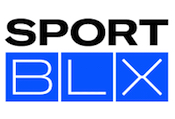|
|
If you anticipate producing an emotional reaction in your audience, be prepared to meet them on their terms, and on the platforms they use to vent their frustrations and gloat over their successes.
Twitter is a huge avenue for football fans. Six of the top ten tweeted sports events of 2015 were football games, and Super Bowl XLIX was the top-tweeted event of all television programming in 2015, and the most tweeted-about sports event of all time.
So, it makes sense that football fans would take to Twitter to express their outrage at the recent relocation of the St. Louis Rams, inspiring viral hashtags such as #KroenkeComplaints and #staySTL.
It also would have made sense for the NFL and Rams owner Stan Kroenke to meet their audience on their own playing field online. Instead, officials resorted to a “duck and hide” strategy that cost them the opportunity to build stronger rapport with fans and control the conversation around its sensitive relocation decision.
The NFL knows its audience, and has made strategic moves to match fans’ affinity for Twitter. NFL executives have noted that between 60 and 70 percent of fans look at another device while watching professional football.
In August, Twitter and the NFL expanded their relationship with a multi-year deal expected to significantly increase the amount and frequency of content posted by the league each year. And in January, Twitter launched hashtag emojis for the NFL’s remaining playoff teams for the first time.
The communications disconnect between the NFL and the Rams didn't distance the league from fan anger but instead stoked it. Stan Kroenke’s 29-page LA relocation proposal torched his relationship with St. Louis, and when the NFL approved his request, that anger funneled towards the league as well.
Of the three NFL teams that applied for relocation to LA, only the Rams sent a two-sentence notification to the public about their submission. And while the league declined to release the Rams' application to the public, the team chose to share the proposal’s scathing analysis of the city. At the minimum, an internal conversation about communicating with fan backlash was warranted.
A positive social media strategy is always more viral than a negative one, and the Rams and NFL could have harnessed the massive social media power of not just the league and team leadership, but of the team’s players.
Reggie Bush of the San Francisco 49ers, the most followed NFL player, has 3 million followers, more than the top two most followed team — the New England Patriots and the Dallas Cowboys — combined. Several Rams players tweeted thanks to their St. Louis fans. Defensive end Chris Long wrote, “…Thank you St. Louis. I’m sorry we fell short the past 8 years. You treated me like family anyways.” This received more than six thousand likes and nearly three thousand retweets. However, a more concerted and widespread positive message from the players could have made a stronger impression on fans.
Conflict begets conversation, opening a door for brands to invoke the corporate social responsibility concept and endear themselves to an audience in distrust or uproar. In a time where short attention spans are bemoaned en masse, sports fans stand apart. Sustained by a deeply passionate and involved community, sports fandom is notorious for creating legendary archetypes, heroes and traitorous villains. St. Louis, a city recently named by the Wall Street Journal the best sports town in America, perhaps epitomizes this aggrandizement.
Partaking in community dialogue — acting as a component of the sports community rather than as the community’s distant and unaccountable rulers — would have been valuable in sculpting an attentive and dedicated public persona. Had the NFL or Kroenke engaged with the sports community about the controversy on Twitter, they would have had an easy avenue to defend their interests and have their perspective represented in their audience’s dialogue. In skipping stones instead of rising the tide, Stan Kroenke and the NFL let their boats sink.
* * *
Sue Zoldak is Vice President of LEVICK. A digital and social media campaign expert, Sue builds grassroots and advocacy campaigns and provides leading-edge advertising and media strategy for clients facing adversity across a range of industries.



 Brunswick Group handles Endeavor, which has launched a review of strategic alternatives at the sports and entertainment combine as CEO Ari Emanuel believes Wall Street undervalues his company.
Brunswick Group handles Endeavor, which has launched a review of strategic alternatives at the sports and entertainment combine as CEO Ari Emanuel believes Wall Street undervalues his company. MWWPR has been retained by SportBLX to lead communications for the launch of a platform that allows fans and investors to own shares of unique assets in sports.
MWWPR has been retained by SportBLX to lead communications for the launch of a platform that allows fans and investors to own shares of unique assets in sports. DraftKings is betting on Donald Trump-connected Ballard Partners to help it achieve its economic development and regulatory relief goals in Washington. (1 reader comment)
DraftKings is betting on Donald Trump-connected Ballard Partners to help it achieve its economic development and regulatory relief goals in Washington. (1 reader comment) On November 15, “Ford v Ferrari” will roar into theaters, packing a publicity boost for two great global auto brands right on the marquee. Here's a Top Ten list of films in which a brand played a starring role. (1 reader comment)
On November 15, “Ford v Ferrari” will roar into theaters, packing a publicity boost for two great global auto brands right on the marquee. Here's a Top Ten list of films in which a brand played a starring role. (1 reader comment) Steven Spielberg’s Amblin Partners has brought on Dan Berger as executive vice president and head of communications.
Steven Spielberg’s Amblin Partners has brought on Dan Berger as executive vice president and head of communications.


 Have a comment? Send it to
Have a comment? Send it to 
No comments have been submitted for this story yet.